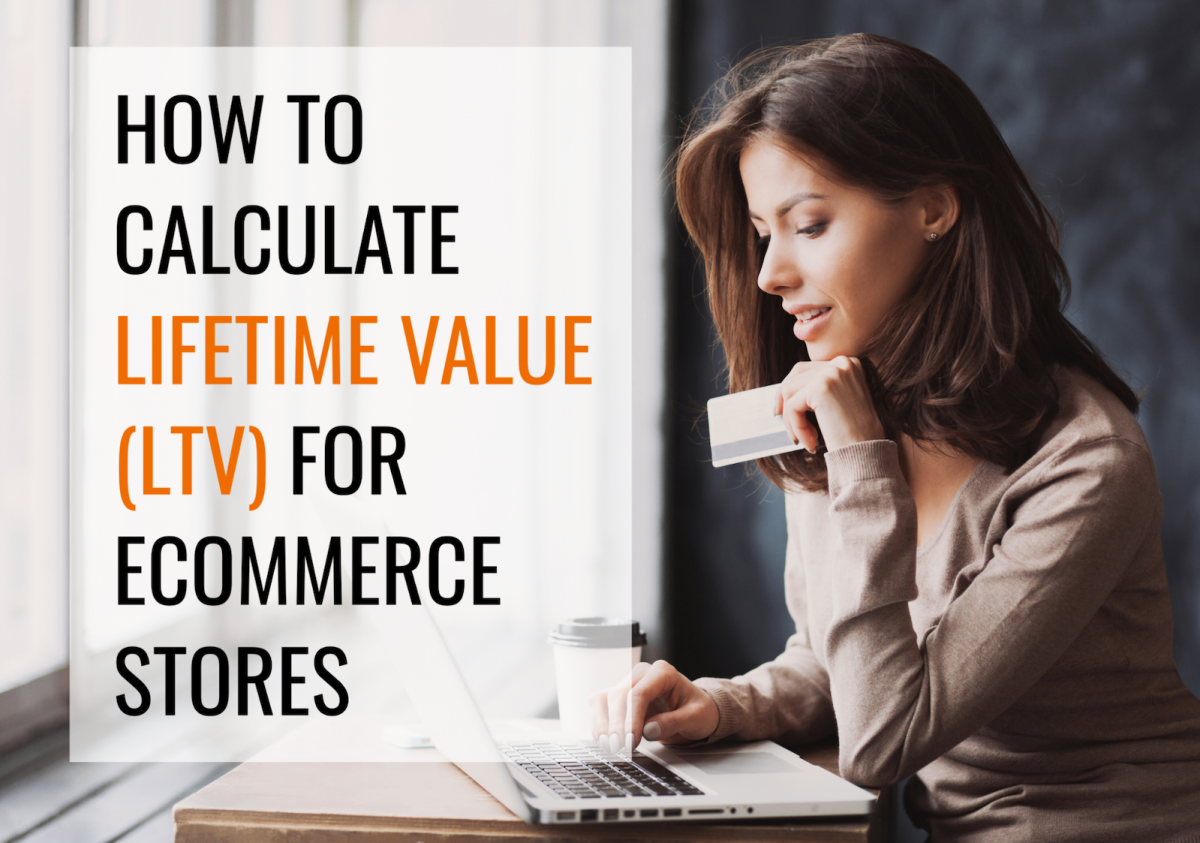How much, exactly, are your customers worth to you? Sure, we all know that customers are tremendously valuable and the whole reason that we’re in business in the first place, but did you know that from a financial standpoint, you can assign a specific dollar value to each of your customers?
Yep, it’s true. This metric is known as your Customer Lifetime Value (LTV or CLV), and it can show you just how much that customer is worth to your business, which in turn, allows you to make sound business decisions. One major decision is your customer acquisition costs.
When you know exactly how much you can afford to spend in order to keep your existing prospects happy or how much you can allocate to draw new customers in (through ad-spend or another channel), you’ll be able to be more competitive with your ads and other acquisition methods.
Companies usually focus on metrics such as revenue, operational expenses, and net profit margins. These are all important, but paying attention to your customer lifetime value (LTV) is crucial as well. Improved LTV means reduced customer churn, better customer retention rates, and more high-value and repeat orders.
But while calculating your customer lifetime value is all well and good if your store has been around for a few years and you have an existing customer base, if you’re new, or if you’re just changing how you package your products, for example, lifetime value becomes a bit harder to calculate. If this sounds like you, don’t worry, there are alternative metrics that you can use instead.
In this article, we’ll take a look at customer lifetime value calculations and how to use LTV in your marketing strategy. Let’s dive in.
Why Is Customer Lifetime Value and Why Is It Important?
Customer lifetime value is a metric that companies use to determine the monetary value of a customer throughout the entire relationship with a brand.
Customer lifetime value helps you identify, attract, and keep profitable or high-value customers. These are customers who repeatedly purchase from you and spend the most money on your business. When you know what kind of customers you need to attract, you can plan better campaigns and target your ad spend to get them to your store.
Aside from allowing ecommerce businesses to quantify the value of their customers, LTV can be used to:
- Maximize ROI by allocating more budget for high-value customers
- Save money on customer acquisition costs by spending less on channels or strategies that bring lower-value customers
- Improve customer retention rate and brand loyalty by delivering relevant marketing messages and timely offers
- Create personalized experiences that delight customers, increase brand awareness and recall, and boost customer satisfaction
- Target the right customers for your business and for loyalty and VIP rewards shopper programs
- Reduce churn rate by identifying gaps in your strategy that cause customers to stop purchasing
- Develop your customer service and support strategies and to create customer-centered store policies
- Increase customer profitability by increasing average order value
What’s the Customer Lifetime Value Formula?
You can analyze your LTV in three ways: at a company level (the big picture average), customer segments, (broken down according to customer groups), and individual level (considers each individual customer).
Before you start calculating your LTV, you need to have these data points:
- Average Purchase Value is the average amount a customer spends per transaction. This is calculated by dividing your company’s total revenue by the number of purchases during a chosen time period (for example, one year).
Average Order Value = Total Sales / Order Count
- Purchase Frequency is how often a customer buys from your store. To get the figure, divide the number of purchases by the number of unique customers during that period.
Purchase Frequency = Total Orders / Total Customers
- Average Customer Lifespan refers to the length of a typical customer relationship. Get this figure by calculating the average number of years a customer buys from your company.
Average Customer Lifespan= Sum of Customer Lifespans / Number of Customers
No matter if you choose to analyze your LTV at a company or individual level, the base equation for customer lifetime value calculation always remains the same:
Customer Lifetime Value = Average Purchase Value x Purchase Frequency x Estimated Customer Lifespan
How to Download Your Data and Calculate LTV on Google Sheets
Here are some steps for downloading and organizing your data:
- Go to your online store’s admin page and download all your orders as a plain CSV file. The example below is from Shopify and Keycommerce, but you can do the same with data from other ecommerce platforms. Make sure that the order value and email of the customer are included in the data.
- Copy all the data from the CSV file and paste it into Google Sheets.
- On the same Google Sheet, create a new tab where you will perform the calculations.
- Extract the “unique” emails from the list by using this UNIQUE formula to filter out repeat customers in the list: =unique(Sheet1!B:B)
(Source: Keycommerce)
- Next, look for the total number of orders per customer. Use the COUNTIF FORMULA: =countif(Sheet1!B:B, D2)
(Source: Keycommerce)
- Get each customer’s total purchase value per order using the SUMIF formula: =sumif(Sheet1!B:B, D2, Sheet1!L:L)
(Source: Keycommerce)
- Now you can calculate each customer’s average purchase value and average customer lifetime value using the AVERAGE formula: =average(value1:value_)
Calculate the value under the “Total Value” column.
- Use the same formula to get the average purchase value per customer, but this time, extract the values from the “Number of Orders” column.
For step-by-step instructions on how to do this from Keycommerce, be sure to see their helpful article: How to Calculate Customer Lifetime Value in Ecommerce.
Analyzing LTV by Customer Segment
Company-wide averages are helpful in showing you the big picture, but the trouble is that averages don’t show interesting details that make one customer stand out from another. Some clients can be “better” or “worse” than the average.
In a certain time period, your best customers could be buying four times versus your company average of two. They could also be spending 60% more than average per order. You can also have clients whose frequency and purchase value are way below your average. Take a look at this example:
(Source: Kaushik)
Get our How to Calculate Lifetime Value (LTV) for Ecommerce Stores - Worksheet delivered right to your inbox.
To break your customers further down into segments, Shopify advises ecommerce businesses to use the RFM (Recency, Frequency, and Monetary Value) technique when analyzing customer lifetime value. Segment your customers with RFM, analyze these groups individually, and determine which group has the highest customer lifetime value.
RFM refers to:
Recency: The last time a customer bought from your store
Frequency: How often a customer buys within a certain timeframe
Monetary Value: Amount spent within a certain time frame
Here’s how to use RFM for customer lifetime value:
- Get your customer data from the Reports section of your Shopify store’s Admin page.
- To help you visualize customer value, assign a score between one to three for each category of RFM. You can give a score of 1 for least valuable, 2 for somewhat valuable, and 3 for most valuable.
For example, for recency, you can give customers who bought within the last two months a score of three. Those who made a transaction within the last four to eight months can be scored a two, and those who have made purchases between 9-12 months ago are given a score of one.
(Source: Shopify)
- Total the scores and add a fourth RFM score column.
(Source: Shopify)
- Sort the chart into three segments according to the scores: low, medium, and high value. The group with the highest score will be your most valuable segment. After segmenting, you can proceed to customer lifetime value calculation. Dive into your data and see what commonalities these customers have and learn how you can market to them better.
(Source: Shopify)
What’s a Good Customer Lifetime Value?
Ideally, your CLV should be at least three times your Customer Acquisition Cost (CAC). For example, if you spend $100 to acquire a new customer, they should have a CLV of at least $300. Your LTV should be high enough to cover all your customer-related expenses. This includes marketing, customer experience, and shipping. If your LTV is too low, your profits may not be high enough to scale your business.
Making Your Data Actionable: How Do You Measure Customer Value?
“When it comes to calculating the lifetime value of your customers, we like to say that there is a simple way, and then there’s the right way,” shares Praxis Metrics in their article, How to Calculate LTV for Growth. “Calculating lifetime value can be as simple as finding a 30 day average; but the true value of calculating out the lifetime value of your customers is to make it actionable.”
Calculating lifetime value can be tricky, so a lot of people break it up into 30, 60, and 90 day LTV to make it a little easier to calculate and a lot more actionable.
Here are some different options that Praxis Metrics recommends when it comes to breaking up your LTV.
LTV by First Purchase Month
“In addition to breaking down LTV into 30, 60, and 90 day calculations, we like to segment customer LTV by first purchase month,” shares Praxis.
Those calculations look like this: AOV * # of purchases (X days) = X-day LTV
“This calculation is already more helpful, because it can show you repurchase and drop-off timelines,” Praxis says. “You can start to see when you need to work on re-engaging and retargeting previous purchasers.”
LTV by First Product Purchased
“The next way that we segment LTV is by the first product purchased by the customer,” Praxis states.
This allows you to see which products are most likely to drive repeat purchases.
“For example, your 30-day supply may drive much higher repeat purchases than your single serving product,” says Praxis.
“One of our clients, JavaPresse, used this metric to boost their LTV dramatically:
They were looking for ways to improve the lifetime value of their customers and discovered that customers who bought a coffee mug with their initial purchase had a much higher LTV and repurchase rate than those who just bought coffee.”
LTV by Discount Code and Traffic Source
Another way to calculate and segment LTV is by discount code used and traffic source.
“The benefit of breaking down LTV by discount code is that you can see if a discount strategy drives long-term benefits for the company, or if it just attracts bargain shoppers,” shares Praxis.
“We had one client who decided to offer a free shipping discount code to see if they could migrate some of their Amazon customers to purchase directly on their site. They assumed that they could absorb the up-front costs and break even on the repeat purchases.”
“The more granular and specific your calculations for LTV get, the more actionable they get. That’s why we like to break down LTV by a multitude of variables, so that we can examine it from every angle and make sure that we’re not missing out on anything that could help our business.”
LTF for Subscription Business Models or New Businesses
When analyzing LTV, there are some factors that can affect calculations. First is the business model: in ecommerce, there are contractual and non-contractual businesses. Most retail stores fall under the non-contractual model. This means that after the customer makes a purchase, the transaction is over.
On the other hand, subscription-based businesses fall into the contractual model. Their figures might be skewed and will reflect very few repeat customers and will have more one-time orders but with a higher dollar value.
The other factor that can affect your LTV calculation is the amount of data you have. This can be a problem for new stores or those that only have one or two years’ worth of sales. If you have irregular data because of your business model or amount of data, you can establish another metric that reflects customer value. You can look at annual value per customer instead, which reflects how much a customer spends in your store within a year.
This is something that I discovered recently with one of my companies while on a call with my accountant. We’d recently switched from single pack orders to bulk orders, and after a year’s worth of data, our numbers looked really skewed.
We started showing that 80% of customers were one-time orders, which were larger than repeat orders were. The issue, though, is that we don’t yet have enough data to know whether these customers will rebuy (since the bulk orders can last 6-9 months).
So now we’re establishing annual value per customer until we have 4-5 years of data to really understand what lifetime value is.
For new businesses, the RFM calculation above is also a great formula that shows you your most valuable customers, even if you don’t have tons of historical data.
What if You DON’T Have Enough Data?
Calculating your customer lifetime value is all well and good, but what if you DON’T have enough data yet to run the numbers?
Don’t panic – we’ve all been there.
The good news is that there are things that you can do to calculate your customer value, even if it’s not a lifetime value. For example, maybe you’re a new business, and you only have a few months of data. That’s fine! Just use the data you have. Or maybe you’ve started a new sales model and are selling multipacks instead of single-purchase items? Again, that’s fine. Just use what you have.
As I mentioned above, we recently switched our advertising from one package to bundles of three, six, and nine. One of the issues we encountered was that since the larger bundles last longer; it could take two to three years’ worth of data in order to spot if we were profitable or to truly understand what the LTV was for these customers, as opposed to the easy cases, where you have someone who buys one package at a time and orders multiple times per year.
So, in some cases, you may not have a true LTV for quite a while. In these cases where you have no data, you can just track revenue instead of LTV over the course of the year. Then adjust back to LTV as you gain more data.
The Next Steps
The LTV equation itself gives us a lot of clues on how we can improve it. By increasing how much a customer spends per order, increasing the purchase frequency, and prolonging the customer relationship with your brand, you’re on your way to improving customer lifetime value and boosting sales. Here’s how you can do this:
Step One: Offer Bundles and Cross-Sells
Bundling products and cross-selling work by increasing average order value. Shoppers love a good deal. You can offer special deals like buy two, get one free, or recommend discounted product bundles of items that are frequently bought together. Cross-sell successfully by adding a related products section to your online store with an app like Related Products – Also Bought.
Step Two: Create Thresholds for Free Shipping or Discounts
Set spending thresholds and offer free shipping or discounts when a customer spends over a certain amount in your store. This is a great marketing technique that incentivizes higher spending per order. Use a promotion bar on your site to make sure customers know you have a minimum order incentive. You can also use an app like Magento 2 Shopping Cart that informs customers about minimum amount thresholds during checkout.
Step Three: Start a Loyalty Program
Eighty-four percent of buyers say they’ll stay with a brand that offers a loyalty program and 66% will modify their brand spending to maximize loyalty benefits. Customers love receiving perks like extra discounts, easily redeemable points, gift cards, cashback, or free gifts. Set up a loyalty program with an app like Smile or Yotpo Rewards.
Step Four: Offer Easy Returns
Refunds and returns are part of running an online business. If customers are happy with their return experience, 92% of them say they will return to buy again. Make returns hassle-free for your customers by making sure your return policy is clear and easy to understand, set a realistic deadline for returns, and make refunds quickly. You can use an app like Returnly that offers self-service returns for customers.
One more thing to make sure you’re doing: attracting the right kind of customer.
Jill Avery, senior lecturer at Harvard Business School, states that often, firms are attracting the wrong kinds of customers.
“We see this in industries that promote price heavily upfront. They attract deal seekers who then leave quickly when they find a better deal with another company,” she says. In business, it’s not just about finding any customer. It’s all about finding the right customers.
Remember that metrics only matter if you apply it to your strategy. Now that you know how to calculate customer lifetime value, you’ll be able to identify your ideal customers and start creating marketing campaigns that increase customer loyalty, encourage repeat sales, and boost average order values.
Note: Thanks again to Praxis Metrics for contributing to this article. Learn how to turn your data into explosive sales growth. Or, dive in and get expert help from a trusted data expert. Sign-up for a free data strategy session and get a free data roadmap today.
Ready to scale your e-commerce business? Reach out today for your FREE 20-minute consultation call with me. Let’s find strategies that’ll help you to reach your big-picture marketing goals.
Get our How to Calculate Lifetime Value (LTV) for Ecommerce Stores - Worksheet delivered right to your inbox.





